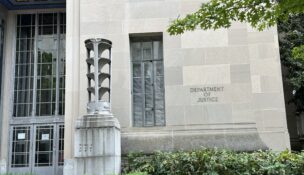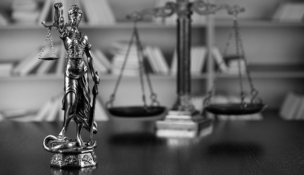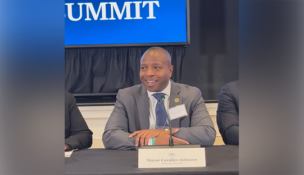Outside spending on high court race tops $1.2 million (UPDATE)
By: Dan Shaw, [email protected]//July 25, 2013//
Outside spending on high court race tops $1.2 million (UPDATE)
By: Dan Shaw, [email protected]//July 25, 2013//
By Dan Shaw
[email protected]
Even though independent groups spent $1.2 million on the spring’s Supreme Court election, the contest was one of the cheapest in recent years.
Mike McCabe, executive director of the Wisconsin Democracy Campaign, said that comparison is evidence that “a new normal has been established when it comes to money in judicial politics.”
The Wisconsin Democracy Campaign, a nonpartisan group that tracks campaign spending, issued a release Thursday estimating that groups with no formal connections to political campaigns spent about $1.2 million in the recent contest between Justice Pat Roggensack, who was elected to a second 10-year term on April 2, and Ed Fallone, a Marquette University law professor. That amount came in far below similar spending in other recent elections to the high court.
For instance, independent groups in 2011 spent $4.5 million on a race that eventually resulted in Justice David Prosser’s defeating JoAnne Kloppenburg, a former state assistant attorney general. In 2007, similar groups spent $3.1 million on an election in which Justice Annette Ziegler was the victor and, a year later, $4.8 million on a contest that resulted in Justice Michael Gableman’s election to the bench.
The amount of money pouring into recent court elections has given rise to fears that the public might perceive justice as being for sale. In response to such concerns, the State Bar of Wisconsin’s Judicial Task Force put forward a proposal in June that would limit justices to serving a single 16-year term on the bench, instead of an unlimited number of 10-year terms.
The proposal, which the bar’s Board of Governors will consider at its September meeting, aims to prevent those on the bench from changing their opinions to avoid offending powerful supporters. So far, support for the proposal has been lukewarm.
Rather than term limits, Fallone suggested that court candidates be allowed to pay for campaigns using public money. Prosser and Kloppenburg were able to use that sort of campaign financing in their race but the practice has since been eliminated by lawmakers.
Fallone also called for the repeal of what he on the campaign trail deemed the “Roggensack rule,” which prevents a party to a case from using campaign contributions as a reason to ask justices to recuse themselves. Fallone said getting rid of the rule would not lead to mandatory recusals, since justices who are asked to step aside would remain free to decide whether they should heed the request, but the elimination would provide “a public-shaming vehicle that could be used.”
Roggensack could not be reached by deadline Thursday afternoon. In her race against Fallone, the Wisconsin Democracy Campaign reported, she benefited the most by outside groups’ spending. Two right-leaning groups, Wisconsin Manufacturers and Commerce and Club for Growth Wisconsin, as well as the Wisconsin Realtors Association, spent about $1 million on television and radio ads either used to express support for Roggensack or to attack Fallone.
Jim Pugh, spokesman for the Wisconsin Manufacturers and Commerce, a pro-business group, said the expenditures simply were examples of the exercise of First Amendment rights established under the U.S. Supreme Court’s 2010 decision in Citizens United v. Federal Election Commission and other decisions.
WMC threw its support behind Roggensack, he said, because she was reported to vote in ways favorable to business interests. An evaluation from the Wisconsin Civil Justice Council, a pro-tort reform group, found Roggensack voted for businesses’ rights 74 percent of the time in two dozen related decisions the court made between 2010-12, the highest percentage among the justices.
The Wisconsin Democracy Campaign, in its report, said WMC spent about $500,000 on ads in favor of Roggensack. Pugh said he believes the spending actually was a bit greater, although he could not furnish an exact number.
McCabe conceded that his group’s numbers constitute a conservative estimate. He said organizations often are not required to report what they have spent independent of a candidate’s campaign.
To obtain an estimate, he said his organization typically goes to television and radio stations and looks at advertising invoices. But that method offers no means of accounting for the money that goes into producing ads.
It is difficult to estimate spending on cable television and direct mailers, as well, McCabe said.
On Monday, the Roggensack and Fallone campaigns reported they had spent about $1 million total on the race, bringing to $2.2 million the final amount spent in the April 2 election. Of that total, about $1.74 million was spent on the behalf of Roggensack or by her campaign; about three times as much as the $487,928 spent by groups that supported Fallone or by his campaign.
Before the Ziegler race in 2007, the most expensive contest for Wisconsin’s highest court was the 1999 election, in which $1.4 million was spent.
“But today, $2.2 million is considered cheap,” McCabe said. “And this was considered to be a race that really didn’t catch fire.”
Legal News
- Some State Bar diversity participants walk away from program
- Wisconsin court issues arrest warrant ‘in error’ for Minocqua Brewing owner
- Iranian nationals charged cyber campaign targeting U.S. Companies
- Facing mostly white juries, are Milwaukee County defendants of color truly judged by their peers?
- Milwaukee Mayor speaks in D.C. Tuesday at White House water summit
- Chicago man sentenced to prison after being caught with ‘Trump Gun’
- FTC bans non-competes
- Gov. Evers seeks applicants for Dane County Circuit Court
- Milwaukee man charged in dismemberment death pleads not guilty
- Democratic-led states lead ban on the book ban
- UW Madison Professor: America’s child care crisis is holding back moms without college degrees
- History made in Trump New York trial opening statements
WLJ People
- Power 30 Personal Injury Attorneys – Russell Nicolet
- Power 30 Personal Injury Attorneys – Benjamin Nicolet
- Power 30 Personal Injury Attorneys – Dustin T. Woehl
- Power 30 Personal Injury Attorneys – Katherine Metzger
- Power 30 Personal Injury Attorneys – Joseph Ryan
- Power 30 Personal Injury Attorneys – James M. Ryan
- Power 30 Personal Injury Attorneys – Dana Wachs
- Power 30 Personal Injury Attorneys – Mark L. Thomsen
- Power 30 Personal Injury Attorneys – Matthew Lein
- Power 30 Personal Injury Attorneys – Jeffrey A. Pitman
- Power 30 Personal Injury Attorneys – William Pemberton
- Power 30 Personal Injury Attorneys – Howard S. Sicula











